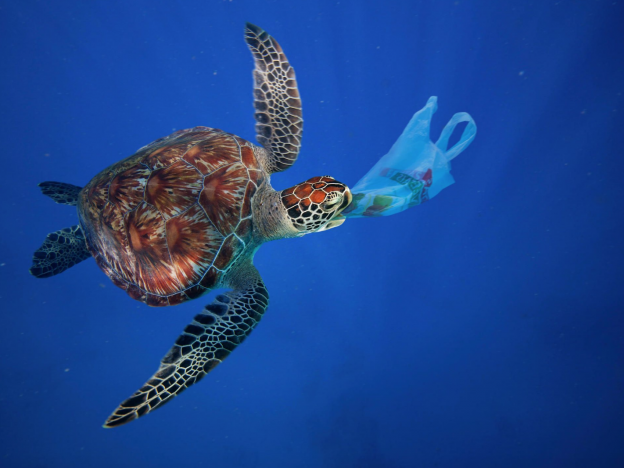The issue with marine litter in the South Asian Seas (SAS)
The accumulation of marine litter is becoming an increasingly severe issue, particularly in the South Asian Seas (SAS). Marine debris can be classified as any persistent manufactured or processed solid material that enters waterways either directly through dumping by humans or indirectly via being washed into the sea from sewage, storm water, rivers or winds. It can also be discarded or lost by ships out at sea. The South Asian Seas is comprised of the Bay of Bengal, the Indian Ocean and the Arabian Sea that borders Bangladesh, India, Sri Lanka, Pakistan and the Maldives. This region provides shelter for 15% of the world’s flora and approximately 12% of the world’s fauna. The aforementioned nations are all developing countries and thus are densely populated and heavily rely on exploiting natural resources for revenue. Depending on the type of industrial and agricultural practices done in that country, the type of pollution can differ.
One of the major sources of marine litter can be traced back to land-based pollution, with a significant contributor being municipal solid waste. Plastic is another large scale factor exacerbating marine pollution, as more than 8 million tonnes are released into the oceans annually, adding onto the already present 150 million tonnes.
Some other persistent materials include glass, styrofoam, cloth, rubber, metal, and lumber. The SAS region generates an estimated 70 million tonnes of solid waste per year, which is essentially around 0.12-5.1kg/person per day. In India, Bangladesh, Sri Lanka and Pakistan, only a minimal portion of solid waste resulting from industrial and agricultural activities are collected. The remaining garbage is dumped and eventually finds its way into coastal waters during rainier seasons by means of rivers, streams and mangrove swamps which are all popular dumping sites. Shipping, commercial fisheries, and other offshore activities are also some sources of solid waste that is directly dumped into the ocean. Almost 80% of the solid waste in coastal and marine areas is composed of ship-generated waste based on a UNEP/GPA Assessment in 2005. Unfortunately, the countries in the SAS region lack the resources and facilities needed for proper disposal of ship-generated waste and in turn, the solid waste is transported to the sea via winds and currents from where it is dumped.

Map of global yearly inputs of plastic from rivers into oceans (Image retrieved from https://theoceancleanup.com/updates/quantifying-global-plastic-inputs-from-rivers-into-oceans/)
To further aggravate the already uncompromising situation, there is also a lack of data on information pertaining to the production of the waste, its life cycle and hence its effects on marine environments. A main reason for this is because countries in the SAS region do a poor job of quantifying and reporting the statistics. The data collected does not follow robust and consistent methodology, but despite the latter, it is still evident that the Southeast and South Asian Seas contribute the largest amount of plastic into the ocean. Overall, lack of awareness of the general population, inadequate solid waste management as well as managerial issues such as non-compliance with rules set by municipalities have ultimately heightened the issue of accumulating marine debris.
References:
Kaur, M., Mathur, M., & Pandey, S. (2019, August 9). Solid waste pollution in the South Asian Seas (SAS). Retrieved January 28, 2020, from https://www.teriin.org/article/solid-waste-pollution-south-asian-seas-sas
Lebreton, L. (2017, June 7). Quantifying Global Plastic Inputs from Rivers into Oceans: Updates. Retrieved January 28, 2020, from https://theoceancleanup.com/updates/quantifying-global-plastic-inputs-from-rivers-into-oceans/
Lyons, Y., Su, T. L., & Neo, M. L. (2019, May). A review of research on marine plastics in Southeast Asia: Whoa does what? . Retrieved January 28, 2020, from https://cil.nus.edu.sg/wp-content/uploads/2019/07/A-review-of-research-on-marine-plastics-in-Southeast-Asia_Final28June2019.pdf
Mahaseth, H., & Sharma, S. (2020, January 26). The Increasingly Pertinent Issue of Marine Litter in South Asia. Retrieved January 28, 2020, from https://intpolicydigest.org/2020/01/26/the-increasingly-pertinent-issue-of-marine-litter-in-south-asia/
Shelte, M., & Gupta, N. (2018, July 13). Mumbai beach turns garbage dump after Arabian Sea vomits trash: Horrifying photos. Retrieved January 28, 2020, from https://www.indiatoday.in/india/story/mumbai-beach-turns-garbage-dump-after-arabian-sea-vomits-trash-horrifying-photos-1284539-2018-07-13
Towards litter free Indian Ocean. (n.d.). Retrieved January 28, 2020, from http://www.sacep.org/pdf/Regional_Marine_Litter_Action_Plan_for_SAS_Region.pdf

